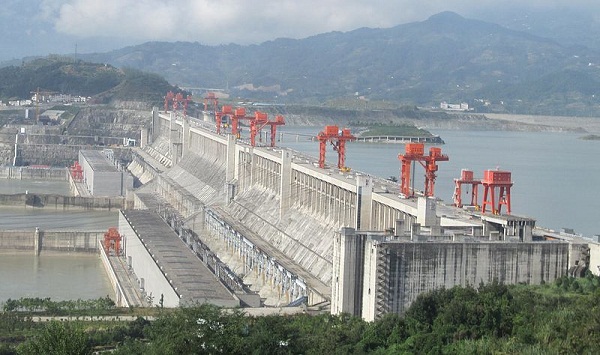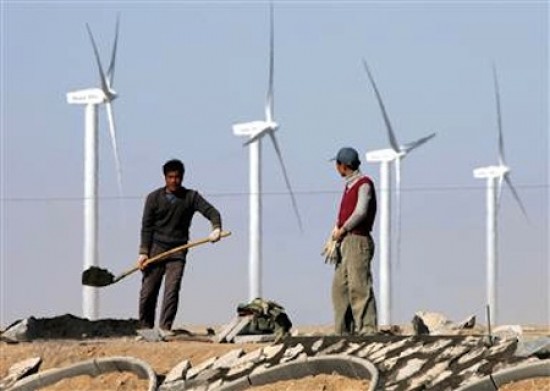China is calling it the world’s largest “base of clean energy.” Whether the $50 billion Three Gorges Dam qualifies as clean or not, holistically speaking, is debatable. But there’s no denying that the hydroelectric project on the Yangtze River, now operating at full capacity for the first time, is a behemoth and China badly needs the power.
The country’s official news agency, Xinhua, said the final 700-megawatt Three Gorges Dam turbine went online this week, 18 years after work on the project began, kicking generating capacity to 22.5 million kilowatts.

That’s about four times the size of the largest U.S. hydroelectric power plant, at Grand Coulee, in Washington state.
Of course, the era of big dam building in the United States has long since passed, recognition of the profound environmental disruption such hydropower projects can cause. Environmentalists do approve of some carefully done small hydro projects, but not the big stuff like Three Gorges. And make no mistake: Three Gorges is widely considered an environmental disaster.
The 600-foot-high, more than 1-mile-long dam, which began producing electricity in 2003, has created a narrow reservoir some 370 miles long. Erosion, major landslides and earthquakes, devastation to freshwater fish and terrestrial animals, an estimated 1.3 million humans dislocated by the rising waters — the list of its impacts goes on.
But of course there was no talk of that after the 32nd and last of the dam’s large turbine generators was put into operation. Xinhua highlighted the dam’s benefits.
“The project has not only eased power shortages and boosted the country’s economic development, but also played a significant role in developing clean energy and cutting greenhouse gas emissions,” said Li Pingshi, director of the Three Gorges Power Plant.
That statement is a reminder that China is in desperate straits in trying to meet its exploding energy demand — vast now and destined to grow by several times — without destroying any chance of the world getting greenhouse gas emissions under control.
Estimates of how much coal use Three Gorges can displace range up to 40 million metric tons per year. Impressive, right? Yet, in 2011 China consumed some 3.5 billion tons. The country recently said it will cap coal consumption at 4.1 billion tons in 2015, but a GBI Research report, coming after that announcement, projected coal production in China would hit 4.5 billion metric tons by 2020.

China is, of course, pursuing many alternatives to fossil fuels. It has huge nuclear ambitions, which it barely put on pause after Fukushima. In 2010, it overtook the United States as the country with the most installed wind energy capacity, adding 18.9 gigawatts and boosting its total capacity up to 44.7 GW. It aims to hit 200 GW in installed capacity by 2020, on the way to a whopping 1,000 GW by 2050. That would make up 17 percent of the nation’s electricity production.
China has also been upping its solar targets; after Fukishima, it doubled targeted 2015 capacity to 10 GW, then late last year bumped it up again to 15 GW.
Still, to what degree China can temper coal use in the medium term remains an open question — the country expects electricity demand to rise from 4,200 terawatt-hours in 2020 to 13,000 TWh in 2050. The contribution from the Three Gorges Dam? Around 80 TWh each year.